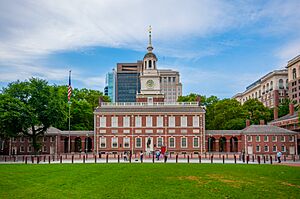National Historic Landmark facts for kids
A National Historic Landmark (NHL) is a very special place in the United States. It could be a building, a whole area, an object, or a historical site. The U.S. government officially recognizes these places because they are super important to American history. Imagine them as national treasures!
There are over 90,000 historic places listed on the country's National Register of Historic Places. But only about 2,500 of these, which is just a small part, are special enough to be called National Historic Landmarks. These are the best of the best!
Sometimes, a National Historic Landmark can be a whole area, like a historic neighborhood. This is called a National Historic Landmark District. These districts can have many important buildings and sites within them.
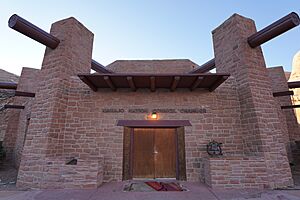
Contents
What Are National Historic Landmarks?
National Historic Landmarks are places that tell amazing stories about America's past. They help us understand how the country grew and changed. These landmarks are chosen because they have a huge impact on our history and culture.
Think of them as giant history books you can visit! They show us where important events happened. They also show us where famous people lived or worked. By protecting these places, we make sure their stories can be shared for many generations.
Why Do We Protect Historic Places?
Protecting historic places is very important. It helps us learn about the past. It also helps us understand who we are today. These landmarks connect us to the people and events that shaped our nation.
When we save these sites, we keep history alive. We can visit them and imagine what life was like long ago. This helps us appreciate our heritage and learn from the past. It's like having a time machine you can walk through!
The Story Behind the Landmarks
The idea of protecting special places in the U.S. started a long time ago. One of the very first places recognized was a simple cedar post. It was placed in 1804 by the Lewis and Clark Expedition. They put it there to remember Sergeant Charles Floyd, who sadly passed away during their journey to the Pacific Ocean.
Later, a tall marble monument was built in its place. This monument, called the Sergeant Floyd Monument in Sioux City, Iowa, was officially named a National Historic Landmark on June 30, 1960. It was one of the first!
How the Program Started
Before 1935, people tried to save important historical sites in different ways. But there wasn't one big plan. Then, in 1935, the U.S. Congress passed a law called the Historic Sites Act. This law was a big step forward.
It allowed the government to officially record and organize historic properties. It also gave the National Park Service the job of looking after these special places. They started surveys to find buildings and sites that were important to American culture and architecture.
Growing the Landmark Program
Many places were recognized under this new law. For example, the Gateway Arch National Park in St. Louis, Missouri, was designated in 1935. The Salem Maritime National Historic Site became the first National Historic Site in 1938.
In 1960, the National Park Service began to manage the information about these sites more formally. This is when the National Historic Landmark program really took shape. In 1966, the National Register of Historic Places was created. The NHL program became a part of this larger list.
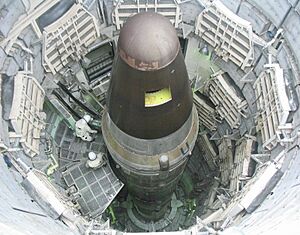
A new rule was added in 1980. It said that owners of a property must agree before their property can be named a National Historic Landmark. This ensures that everyone is on board with protecting these important sites. On October 9, 1960, 92 places were announced as eligible for NHL status. All of them are now considered officially listed from that date.
What Makes a Place a Landmark?
The U.S. Secretary of the Interior decides which places become National Historic Landmarks. They look for places that meet certain important rules, or "criteria." A place can become an NHL if it is:
- A site where major historical events happened.
- A place where famous people lived or worked.
- An example of important ideas that shaped the nation.
- An amazing example of design or how something was built.
- A place that shows a special way of life from the past.
- An archaeological site that can teach us new information.
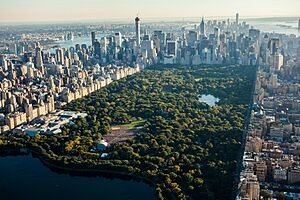
Where Can You Find These Landmarks?
Today, there are more than 2,500 National Historic Landmarks! Most of them are in the United States. You can find NHLs in all 50 states and in Washington, D.C., our nation's capital.
Some states have many more landmarks than others. For example, Pennsylvania, Massachusetts, and New York together have almost a quarter of all NHLs! Cities like Philadelphia, Boston, and New York City each have more NHLs than most entire states. New York City alone has more NHLs than 45 other states!
Landmarks Around the World
Not all National Historic Landmarks are within the 50 states. Some are in U.S. territories like Puerto Rico and the Virgin Islands. There are also a few in countries that are associated with the U.S., like Micronesia.
And guess what? There's even one in Morocco! It's called the American Legation in Tangier. This was the first U.S. public property outside the country.
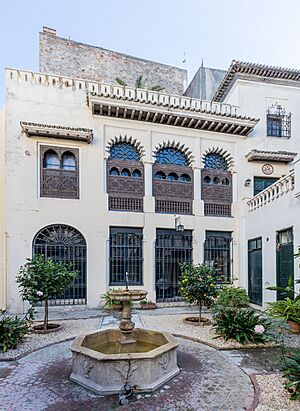
Many ships and shipwrecks are also recognized as NHLs. There are over 100 of them!
Who Cares for These Special Places?
About half of all National Historic Landmarks are owned by private citizens or groups. The National Park Service helps suggest new landmarks and also helps take care of the existing ones.
There's also a group called the National Historic Landmark Stewards Association. This group is made up of owners and managers of these landmarks. They work hard to protect, preserve, and share the stories of these important places.
When a place is named an NHL, it is also automatically added to the National Register of Historic Places. However, there are three very famous exceptions in Washington, D.C.: the White House, the United States Capitol, and the United States Supreme Court Building. These are all NHLs, but they are not on the National Register. They are so important that they have their own special rules!
See also
 In Spanish: Hito Histórico Nacional (Estados Unidos) para niños
In Spanish: Hito Histórico Nacional (Estados Unidos) para niños
- American Water Landmark
- Listed building, a similar designation in the UK
- List of churches that are National Historic Landmarks in the United States
- List of U.S. National Historic Landmark ships, shipwrecks, and shipyards
- List of U.S. National Historic Landmarks by state
- National Historic Sites, Events, and Persons, similar designations in Canada
- National Natural Landmark
- United States memorials
- United States National Register of Historic Places listings


